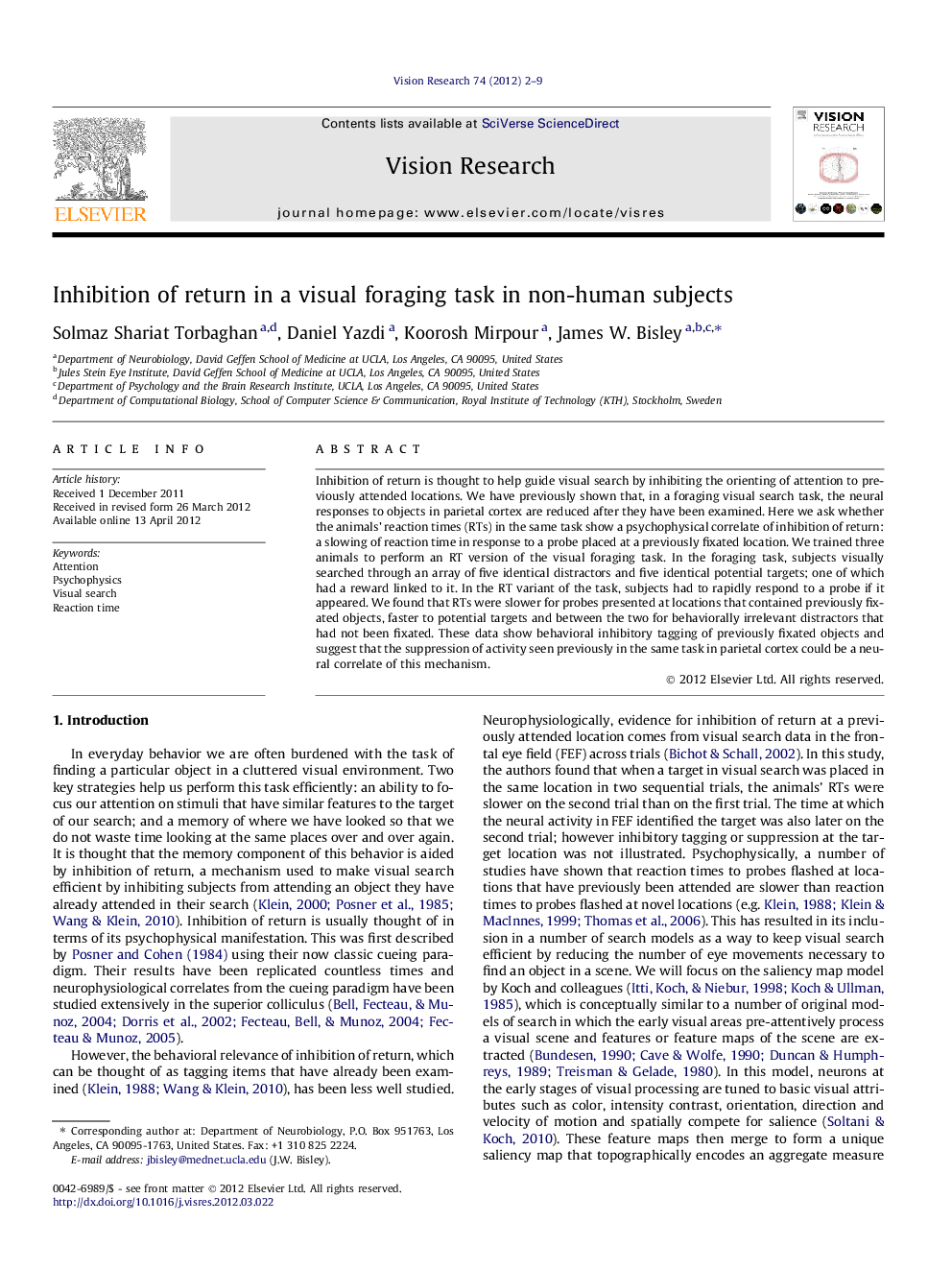| Article ID | Journal | Published Year | Pages | File Type |
|---|---|---|---|---|
| 6203652 | Vision Research | 2012 | 8 Pages |
Inhibition of return is thought to help guide visual search by inhibiting the orienting of attention to previously attended locations. We have previously shown that, in a foraging visual search task, the neural responses to objects in parietal cortex are reduced after they have been examined. Here we ask whether the animals' reaction times (RTs) in the same task show a psychophysical correlate of inhibition of return: a slowing of reaction time in response to a probe placed at a previously fixated location. We trained three animals to perform an RT version of the visual foraging task. In the foraging task, subjects visually searched through an array of five identical distractors and five identical potential targets; one of which had a reward linked to it. In the RT variant of the task, subjects had to rapidly respond to a probe if it appeared. We found that RTs were slower for probes presented at locations that contained previously fixated objects, faster to potential targets and between the two for behaviorally irrelevant distractors that had not been fixated. These data show behavioral inhibitory tagging of previously fixated objects and suggest that the suppression of activity seen previously in the same task in parietal cortex could be a neural correlate of this mechanism.
⺠Previous work has shown response inhibition in LIP to visited stimuli. ⺠We show reaction time inhibition to previously visited stimuli in the same task. ⺠Reaction times were slow to probes at non-visited distractor locations. ⺠We conclude that the inhibition seen in LIP is inhibitory tagging seen in IOR.
